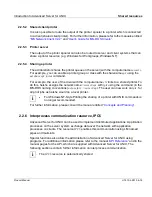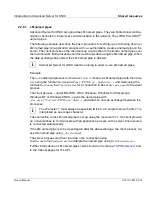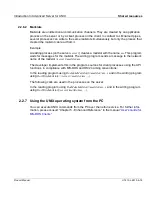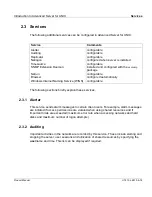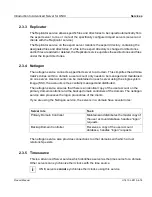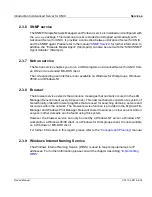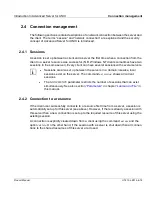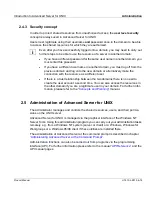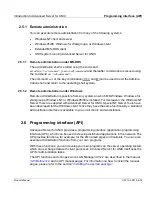
Introduction to Advanced Server for UNIX
Shared resources
Product Manual
U7613-J-Z815-6-76
©
S
iem
e
n
s
N
ix
dor
f
In
fo
rm
at
io
n
s
s
y
s
te
m
e
A
G
1
9
9
5
P
fad
: D:
\O
7
613
e6
\u
761
3e
.k
02
2.2.1.1
System name
Each UNIX system has a unique name in the network, which can be displayed using the
command
uname -n
and set as the
network node name
using the SYSADM utility program.
In order to avoid problems, it is strongly recommended that the system names you
assign are unique throughout the network. While the same system name may
appear several times in different DNS domains, even in the same network,
Advanced Server for UNIX uses the system name internally for generating names
which must always be unique.
2.2.1.2
Computername (server name)
Servers and clients must have a unique name in the network, known as the computername.
The computername of a server is also called server name.
A proposed server name is derived from the first 15 characters of the system name when
it is being installed first. The terms computername and server name are used synony-
mously in relation to the server.
It can be changed to any name (with a maximum of fifteen characters) during installation.
The server name is stored automatically in the
lanman.ini
file on the server. It is part of the
network name and may only be changed after the installation using special utility programs.
For further information please refer to the section entitled
“Changing server attributes”
in
the chapter entitled
“Administration guidelines”
.
●
The server name consists of up to fifteen characters: letters from a to z,
numbers from 0 to 9 and the special characters -.~!#$%^&()_{}.
●
In the previous Version 2.0, the server name for the LAN Manager/X server had
the suffix
.serve
. Please note that both LAN Manager/X Version 2.2 and
Advanced Server for UNIX up to version 4.0A10 propose the suffix
.srv
for a first
installation instead.
●
Since Advanced Server for UNIX V4.0B, the default server name proposed
during the first installation is built from the system name without an extension.
●
In order not to run into problems when upgrading to upcoming NT/AS/X-
versions in the future, all tools requesting a server name during installation or
reconfiguration offer the DNS-compatible host name (
‘uname -n‘
) as the default
server name. The extension
.srv
can still be used, but is not recommended and
no longer offered as a default. Installation/configuration scripts now inform the
administrator about DNS-incompatible server names.
!
i
i

















